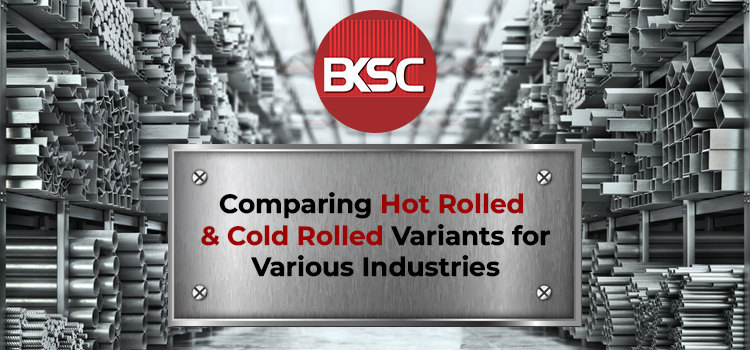When choosing the right kind of steel for your project, understanding the vital differences between hot-rolled and cold-rolled steel is significant. Both cycles offer unique benefits and have their own disadvantages. In this blog, we’ll investigate the pros and cons of hot-rolled and cold-rolled steel, assisting you with making an informed choice for your steel needs.
Hot Rolled Steel: The Force of Intensity Hot rolled steel is made by warming steel sections over their recrystallization temperature and afterward folding them into the ideal shape. We should investigate the benefits and detriments of hot-rolled steel.
Pros of Hot Rolled Steel:
- Cost-effectiveness: Hot-rolled steel is in many cases more cost-powerful than cold-rolled steel because of the easier assembling process included.
- Structural integrity: Its high pliability and flexibility make hot-rolled steel ideal for structural applications, like beams, columns, and heavy-duty equipment.
Cons of Hot Rolled Steel:
- Surface finish: The surface of hot rolled steel might have a harsh surface and scale, which can influence its appearance and require extra surface medicines.
- Dimensional accuracy: Hot-rolled steel can have somewhat less exact aspects contrasted with cold-rolled steel, which might be a worry for projects with severe tolerances.
Cold Rolled Steel: Accuracy and Strength Cold-rolled steel is made by passing hot-rolled steel through a progression of rollers at room temperature. This cycle gives unique benefits and hindrances, as illustrated underneath.
Pros of Cold Rolled Steel:
- Excellent surface finish: Cold rolled steel goes through extra handling, bringing about a smooth, refined surface that is profoundly attractive for applications requiring a clean appearance.
- Dimensional accuracy: Cold rolled steel offers prevalent dimensional accuracy and tight tolerances, making it reasonable for projects that request exact estimations.
Cons of Cold Rolled Steel:
- Higher cost: Because of the extra handling steps included, cold-rolled steel is for the most part more costly than hot-rolled steel.
- Limited size availability: Cold rolled steel is many times accessible in more slender checks and more modest sizes contrasted with hot rolled steel, which can restrict its utilization in specific applications.
Choosing the Right Steel for Your Needs:
While choosing hot-rolled and cold-rolled steel, taking into account the specific needs of your project is important. If cost-effectiveness, structural integrity, and bigger sizes are urgent factors, hot-rolled steel might be the right decision. Then again, if you focus on surface finish, dimensional accuracy, and expanded hardness, cold-rolled steel might be more reasonable. L6 Tool Steel Punjab is a high-quality steel for industrial applications.
Conclusion:
Understanding the pros and cons of hot-rolled and cold-rolled steel is crucial for choosing the most fitting material for your task. By considering the specific prerequisites and constraints of your venture, you can settle on an educated choice that lines up with your objectives. Whether you want steel for construction, hardware, or some other application, consulting with respectable steel dealers in Punjab, similar to BK Steel Company, can guarantee you track down the right steel to address your issues.


